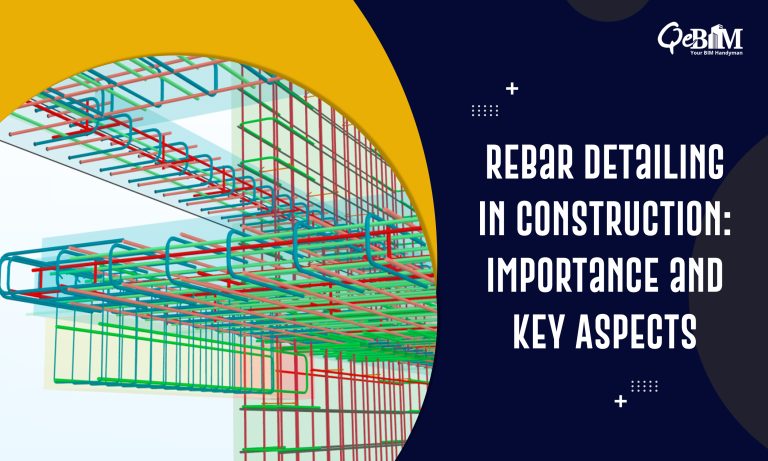Rebar Detailing in Construction: Importance and Key Aspects

Rebar detailing is a vital component of structural engineering and construction. It involves the precise planning as well as design of reinforcing steel bars used in concrete structures. This detailed process plays an integral role in ensuring the safety, strength, and durability of various constructions. It ranges from the residential buildings to massive infrastructural projects. Understanding the importance and scope of Rebar Detailing Services can provide deeper insights into how structural integrity is achieved and maintained in the modern engineering.
What Exactly is Rebar Detailing?
Rebar detailing refers to the meticulous process of specifying the types, sizes, placements, and quantities of reinforcing bars (rebar) used in the concrete structures. Rebar, usually made of steel, is embedded in concrete to improve its tensile strength and ductility. Concrete, while excellent in compression, is weak in tension. Rebar compensates for this weakness thereby making the structure more resilient to various stresses as well as forces.
The Importance of Rebar Detailing
1) Structural Integrity and Safety
The main goal of rebar detailing is to make sure that the concrete structures are structurally sound and safe. By accurately detailing rebar placement, engineers can prevent potential failures and accidents. Properly placed rebar helps in distributing loads evenly, which is critical for maintaining the integrity of structures under various conditions including seismic activities, heavy loads, as well as environmental stresses.
2) Load Distribution and Strength
Concrete structures are engineered/designed to endure specific loads and stresses. Rebar detailing determines how these loads are distributed throughout the structure. For example, in a high-rise building, rebar placement is crucial in supporting vertical loads and resisting lateral forces such as wind or seismic activity. Detailed rebar layouts ensure that these loads are adequately supported thereby preventing potential structural failures.
3) Compliance with Codes and Standards
Rebar detailing is governed by the building codes and standards which often vary by region but generally aims to ensure the safety and quality in construction. The detailed plans ensure the compliance with these regulations which often specify minimum requirements for rebar size, spacing, and cover. These compliance helps avoid legal issues thereby ensuring that the structure is built according to accepted engineering practices.
4) Economic Efficiency
Effective rebar detailing contributes to the cost-efficiency in construction. Proper planning and detailing minimize the material waste and reduce the risk of rework due to errors. Efficient use of rebar not only cuts costs but also speeds up the construction process ultimately leading to the cost savings for both builders and clients.
5) Quality Assurance and Durability
The quality of rebar detailing impacts the long-term durability of a structure. Properly detailed and placed rebar often enhances the concrete’s resistance to cracking, corrosion as well as deterioration. This extends the structure’s lifespan thereby minimizing the need for consistent repairs and maintenance, and ensuring long-term durability and reliability.
Scope of Rebar Detailing
1) Design and Planning
Rebar detailing comprises the understanding of the structural design as well as the loads the structure will bear. Detailed plans are created, specifying rebar types, sizes, lengths, and placement. This involves creating detailed drawings and diagrams that outline the exact location and arrangement of rebar within the concrete.
2) Coordination with Other Disciplines
Rebar detailing requires a close coordination with other construction disciplines such as architectural and mechanical engineering. This ensures that rebar placement does not interfere with other building systems like plumbing, electrical conduits, or HVAC systems. Effective coordination helps avoid conflicts thereby ensuring that all the elements of the construction fits together seamlessly.
3) Fabrication and Installation
Once the detailed plans are finalized, rebar is fabricated according to the specifications. This involves cutting, bending, as well as assembling the rebar before it is transported to the construction site. At the site, the rebar is carefully placed and tied according to the detailed drawings. Accurate installation is crucial for maintaining the structural design and ensuring that the rebar performs as intended.
4) Inspection and Quality Control
Frequent inspections and quality control checks are integral to the rebar detailing process. Inspectors verify that the rebar has been placed and secured according to the detailed plans and specifications. These checks help detect and correct any discrepancies or issues before the concrete is poured thereby ensuring that the structure meets all required standards.
5) Documentation and Record Keeping
Detailed documentation as well as record-keeping are essential for tracking the rebar detailing processes. This includes maintaining records of rebar specifications, placement, and any other modifications or changes made at the time of the construction. Proper documentation helps in future maintenance and repair work. It also provides a reference for any structural assessments or modifications needed later.
Conclusion
Rebar detailing is a fundamental aspect of BIM Outsourcing Services in the construction that significantly impacts the safety, strength, and longevity of the concrete structures. Its importance spans from ensuring structural integrity and compliance with building codes to optimizing cost-efficiency and enhancing durability.